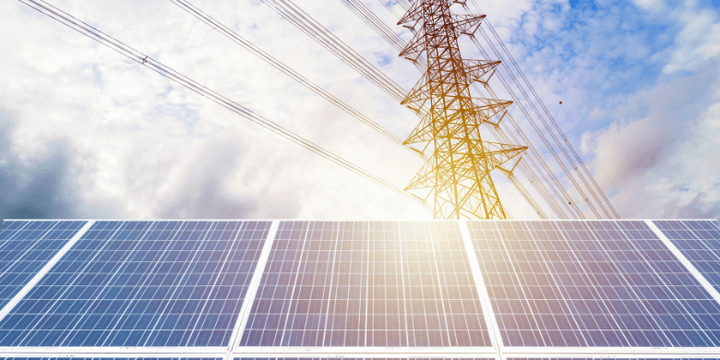Are you involved in the construction industry and looking for ways to enhance your knowledge of utilities construction? You’ve come to the right place! In this blog post, we will delve into the world of utility specifications, providing you with valuable insights and best practices to ensure the success of your construction projects. CSI MasterFormat is an essential tool for organizing construction specifications, and Division 33 is a key component of this system, focusing on utilities.
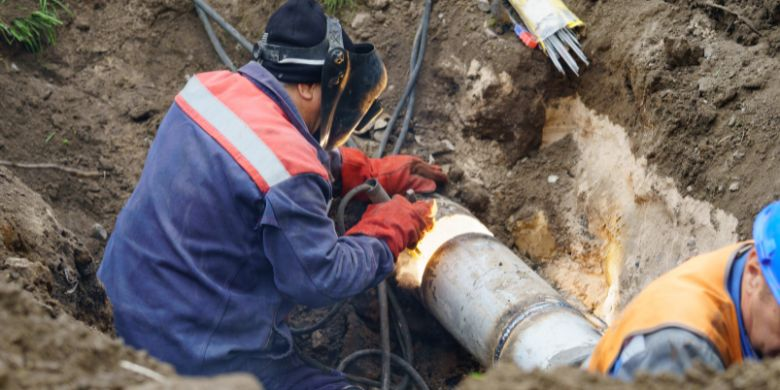
By understanding and implementing the guidelines detailed in Division 33, industry professionals can plan, design, and execute utilities projects with greater efficiency, cost-effectiveness, and safety. In this comprehensive guide, we will be covering the following topics:
- Introduction to CSI Division 33 — Utilities: Gain a deeper understanding of the significance of CSI MasterFormat and the role of Division 33 in the construction industry.
- Types of Utilities in CSI Division 33: Learn about the various types of utilities, including water and wastewater, stormwater management and drainage, electrical and telecommunications, and fuel and gas utilities.
- Key Components and Materials for Utilities Construction: Familiarize yourself with essential materials and components for utilities construction and factors to consider when selecting them.
- Best Practices in Utilities Construction: Discover industry best practices that ensure safety, efficiency, and cost-effective installations across different utility types.
- Case Studies Demonstrating the Importance of CSI Division 33: Analyze real-life examples that highlight the significance of proper utilities planning and execution in construction projects.
- Conclusion and Future Outlook for Utilities Construction: Recap the crucial points discussed in this guide and explore emerging trends and the future outlook for utilities construction.
This blog post has been designed with readability and SEO in mind, ensuring that professionals like yourself can quickly locate and absorb the information needed to execute utilities construction projects effectively. As you progress through each section, you will gain a comprehensive understanding of the intricacies of CSI Division 33, equipping you with the knowledge to excel in the ever-evolving construction industry. So, are you ready to master the art of utilities construction? Join us as we embark on this informative journey through CSI Division 33, and prepare to elevate your construction projects to new heights!
Table of contents
- Introduction to CSI Division 33 — Utilities
- Types of Utilities in CSI Division 33
- Key Components and Materials for Utilities Construction
- Best Practices in Utilities Construction
- Case Studies Demonstrating the Importance of CSI Division 33
Suggested Posts:
- Introduction to CSI MasterFormat and Division 01
- Mastering Division 09 – Finishes in the CSI MasterFormat System for Improved Project Success
- Understanding CSI MasterFormat: Division 14- Conveying Equipment
Introduction to CSI Division 33 — Utilities
Construction projects often involve a complex web of components and systems, with one of the most critical being utilities infrastructure. In this blog post, we’ll delve into the essentials of CSI Division 33 — Utilities, a vital part of the construction industry that covers various types of utilities and their respective components. By gaining a deeper understanding of Division 33, you’ll be better prepared to facilitate the organization and execution of any construction project. But first, let’s establish some context.
The CSI MasterFormat is a standard classification system for organizing construction specifications across different industries. With a history dating back to 1963, MasterFormat is widely recognized and adopted as the go-to system for organizing construction data in a consistent and structured manner. Division 33 falls within this comprehensive standard, focusing specifically on utilities. Utilities play a crucial role in the construction industry, as they supply the necessary resources and services that enable modern infrastructure to function efficiently. As such, it’s essential for construction professionals to be well-versed in the organization, installation, and maintenance of various utilities. So, without further ado, let’s dive into the world of utilities and discover the importance of Division 33 in the construction industry.

Types of Utilities in CSI Division 33
In this section, we will delve deeper into the various types of utilities covered under CSI Division 33 and their importance in construction projects. By understanding the different utility types, construction professionals can better plan and execute projects that utilize these essential services effectively.
Water and Wastewater Utilities
Water and wastewater utilities are critical components of any construction project. These systems manage the supply of potable water to buildings and facilities, as well as the collection, treatment, and disposal of wastewater. Proper planning and installation of water and wastewater utilities ensure that occupants have access to clean, safe water and that harmful pollutants are removed from the environment. Examples of construction projects that heavily rely on these utilities include residential developments, hospitals, schools, and commercial buildings.
Stormwater Management and Drainage
Stormwater management and drainage systems are necessary to control the flow of rainwater and melted snow to prevent flooding, soil erosion, and infrastructure damage. These systems collect, store, and treat stormwater before it is released back into the environment. Proper implementation of stormwater management and drainage is essential for maintaining the structural integrity of buildings and preventing environmental damage. Some common examples of projects that require stormwater management and drainage include roads, bridges, and urban developments.
Electrical and Telecommunications Utilities
Electrical and telecommunications utilities are essential for powering and connecting modern buildings and infrastructure. These utilities involve the installation and management of electrical power distribution systems, as well as communication networks for voice, data, and video transmission. In today’s constantly connected world, these utilities are crucial for the functionality of homes, offices, and public spaces. Projects that may require extensive electrical and telecommunications utility installations include data centers, large commercial buildings, and transportation systems.
Fuel and Gas Utilities
Fuel and gas utilities provide the necessary energy sources for heating, cooling, and powering various building systems and appliances. These utilities involve the installation, maintenance, and management of pipelines, storage systems, and delivery mechanisms for fuels such as natural gas, propane, and heating oil. Ensuring the safe and efficient delivery of fuel and gas is critical for maintaining the comfort and functionality of buildings, as well as reducing environmental emissions. Examples of projects that typically require fuel and gas utilities include residential communities, industrial facilities, and large commercial buildings.

In conclusion, understanding the different types of utilities covered under CSI Division 33 is essential for the successful planning and execution of construction projects. By correctly implementing water and wastewater utilities, stormwater management and drainage systems, electrical and telecommunications utilities, and fuel and gas utilities, construction professionals can create functional and sustainable buildings and infrastructures that meet the needs of today’s society.
Key Components and Materials for Utilities Construction
In this section, we will explore the essential components and materials used in constructing utilities under Division 33. Proper selection of these elements is vital in ensuring the efficiency, durability, and safety of utility systems. Let’s take a closer look at the key components and materials involved in each type of utility.
Pipes, Valves, and Fittings for Water and Wastewater Utilities
Pipes are the backbone of water and wastewater distribution systems, and their selection is critical for the proper functioning of these utilities. Common materials used for pipes include:
- PVC (Polyvinyl Chloride)
- Cast Iron
- Ductile Iron
- Copper
- HDPE (High-Density Polyethylene)
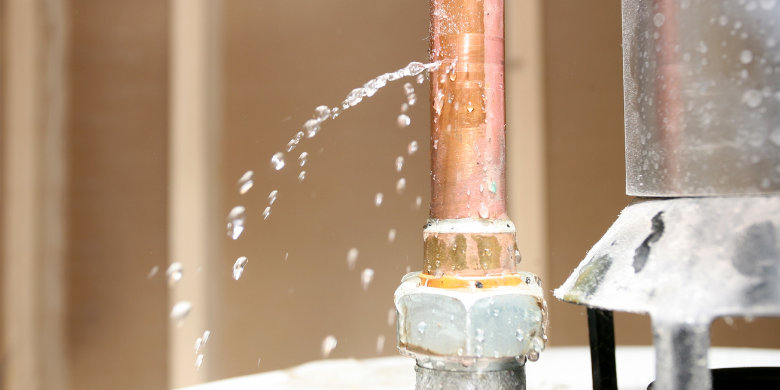
Each material has its unique characteristics, and the choice depends on factors such as pressure and temperature requirements, resistance to corrosion, and installation cost. Valves and fittings play an integral role in controlling the flow, pressure, and direction of fluids in water and wastewater utilities. Some common types of valves include gate valves, butterfly valves, and ball valves.
Conduits and Cables for Electrical and Telecommunications Utilities
Electrical and telecommunications systems depend on conduits and cables for the safe and efficient distribution of power and signals. Conduits are protective tubes used to encase electrical wires and cables, while the cables themselves transmit electricity and signals. Materials commonly used for conduits include:
- PVC
- Rigid Metal Conduit (RMC)
- Galvanized Rigid Conduit (GRC)
- Electrical Metallic Tubing (EMT)
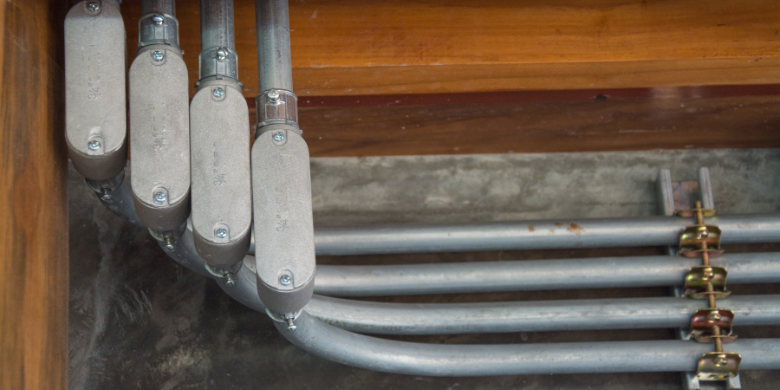
The selection of conduits depends on factors such as installation environment, corrosion resistance, and cost. Meanwhile, cables come in various types and categories, including coaxial cables, twisted pairs, and fiber optic cables, based on their application and bandwidth requirements.
Materials and Systems for Stormwater Management and Drainage
Stormwater management and drainage systems play a crucial role in preventing the accumulation of water and reducing the risk of flooding in construction projects. Key components of these systems include:
- Drainage Pipes (PVC, Corrugated HDPE)
- Catch Basins
- Manholes
- Infiltration Systems (e.g., Swales, Detention Basins, Permeable Pavement)
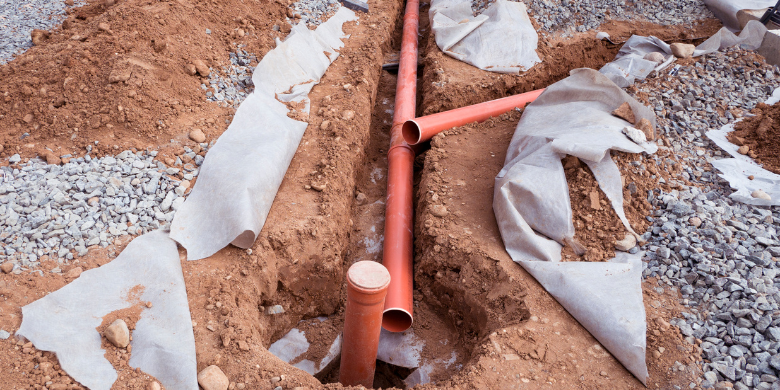
Material choices depend on factors such as load capacity, hydraulic performance, and environmental impact. The design of the system should also take into account local regulations and best management practices to ensure optimal performance and environmental sustainability.
Fuel and Gas Distribution Components
Fuel and gas utilities require specialized components and materials to ensure safe and efficient distribution. These utilities’ key components consist of pipes, valves, fittings, meters, and regulators, similar to water and wastewater utilities but with distinct requirements. Common materials used in gas distribution systems include:
- HDPE (High-Density Polyethylene)
- Steel (Coated and Uncoated)
- Copper
- PVC (for low-pressure systems)
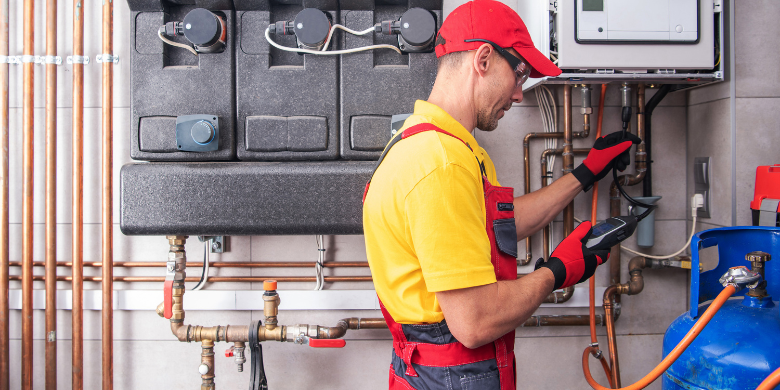
When selecting materials for fuel and gas utilities, factors such as pressure ratings, resistance to corrosion, and compatibility with the specific fuel or gas being transported must be considered. In conclusion, understanding the key components and materials used in utilities construction is crucial for ensuring efficiency, durability, and safety. While each utility type has its unique requirements, the proper selection of materials and components enhances overall performance and reduces the risks associated with improper installations.
Best Practices in Utilities Construction
Efficient, cost-effective, and safe utility construction is paramount to the success of any project. In this section, we will outline various best practices for utilities construction, focusing on how these practices can vary depending on the utility type. We will discuss factors such as the construction environment, regulations, and community impact, covering topics including:
- Planning and designing utilities
- Appropriate utility materials selection
- Safety measures and precautions
- Compliance with local and national regulations
Planning and Designing Utilities for Efficient Installation and Maintenance
Proper planning and designing of utilities is essential to minimize disruptions to surrounding communities and ensure efficient installations. When designing utility systems, it is critical to consider the long-term operation and maintenance of these systems. Key factors to consider during the planning and design phase include:
- Locating utilities in accessible areas to facilitate easy maintenance and inspections
- Ensuring proper sizing of utility systems to accommodate future growth and expansion
- Coordinating with other utility providers to minimize conflicts and disruptions during construction and operation
- Incorporating flexibility in design to allow for changes in technology and environmental factors
Appropriate Utility Materials Selection
Selecting the right materials for utility construction is crucial to ensure durability, reliability, and cost-effectivity. Materials should be chosen based on factors such as soil conditions, environmental exposure, and expected service life. Here are a few examples of material selection considerations:
- For water and wastewater utilities, materials such as ductile iron, PVC, and HDPE pipes can be chosen depending on factors like corrosion resistance, pressure ratings, and ease of installation.
- In the case of electrical and telecommunications utilities, materials like copper and aluminum are commonly used for cables and conduits, with considerations given to factors like conductivity, weight, and cost.
- In stormwater management and drainage, materials such as concrete, corrugated metal, or HDPE pipes should be carefully selected based on factors like load-bearing capacity, corrosion resistance, and hydraulic efficiency.
Safety Measures and Precautions During Construction
Safety is a top priority in utility construction, both for workers and the public. Proper safety measures and precautions should be in place throughout the construction process, including:
- Utilizing personal protective equipment (PPE) for all workers
- Establishing safe working zones and traffic management plans to protect workers and the public from hazards
- Regular safety training and communication to all workers, emphasizing the importance of following safety protocols at all times
- Conducting routine safety audits and inspections to ensure compliance with safety regulations and to identify potential hazards
Compliance with Local and National Regulations
Utility construction projects must comply with local and national regulations to protect public health, safety, and the environment. Some key aspects of regulatory compliance include:
- Acquiring necessary permits and approvals before starting construction
- Strictly following construction codes and standards, such as the National Electrical Code (NEC), American Water Works Association (AWWA) standards, and other industry-specific regulations
- Implementing proper practices for environmental protection, such as erosion control and sediment management during construction
- Coordinating with local utility providers and regulatory agencies to ensure compliance with all applicable regulations

In conclusion, adhering to best practices in utilities construction is vital to ensure safety, efficiency, and cost-effective installations. By carefully planning and designing utilities, selecting appropriate materials, implementing safety measures, and complying with regulations, construction projects can minimize disruptions to communities and maximize the long-term value of utility infrastructure.
Case Studies Demonstrating the Importance of CSI Division 33
In this section, we will explore a few case studies that underline the significance of proper utilities planning and execution in construction projects. These case studies demonstrate the benefits of adhering to best practices and the consequences of neglecting crucial aspects of utilities planning and construction. By looking at both successful and unsuccessful projects, we aim to provide a balanced perspective on the importance of CSI Division 33 in utilities construction.
Case Study 1: Efficient Stormwater Management
A large commercial development project in Southern California faced significant challenges due to stringent stormwater management regulations and limited space for traditional drainage solutions. By following the guidelines set forth in CSI Division 33 and adhering to best practices in stormwater management, the project was able to implement an innovative solutions that utilized permeable pavers and underground retention systems. This approach not only met the regulatory requirements but also saved the project significant costs and space.
Case Study 2: Telecommunications Infrastructure in a Mixed-Use Development
In a recently completed mixed-use development project in the Midwest, the careful planning and execution of telecommunications utilities played a critical role in the project’s success. By closely following the specifications set forth in CSI Division 33, the construction team was able to select appropriate communication conduits and materials, ensuring a seamless integration of residential and commercial telecommunications systems within the development. As a result, the development has experienced fewer service interruptions and has attracted a diverse range of tenants.
Case Study 3: Consequences of Poor Gas Utilities Planning
A multi-family residential project in the Northeast experienced significant delays and cost overruns due to inadequate planning and execution of gas utilities. The construction team failed to fully consider the specifications outlined in CSI Division 33, leading to the installation of improper gas distribution components, and ultimately, a gas leak. This oversight resulted in a costly and time-consuming remediation process, as well as a loss of trust in the project team by residents and stakeholders.
These case studies highlight the importance of adhering to CSI Division 33 utility specifications. Proper planning and execution of utilities construction can result in significant cost savings, increased safety, and the overall success of a project. Conversely, neglecting these vital aspects of construction can lead to expensive and potentially dangerous consequences. As construction professionals, it is essential to stay up-to-date on the latest standards and best practices in utilities construction to ensure the successful and safe completion of projects.
Upgrade Your Building Security
Get in touch with a Swiftlane specialist for more information on the best access control and video intercom solution for your building.



